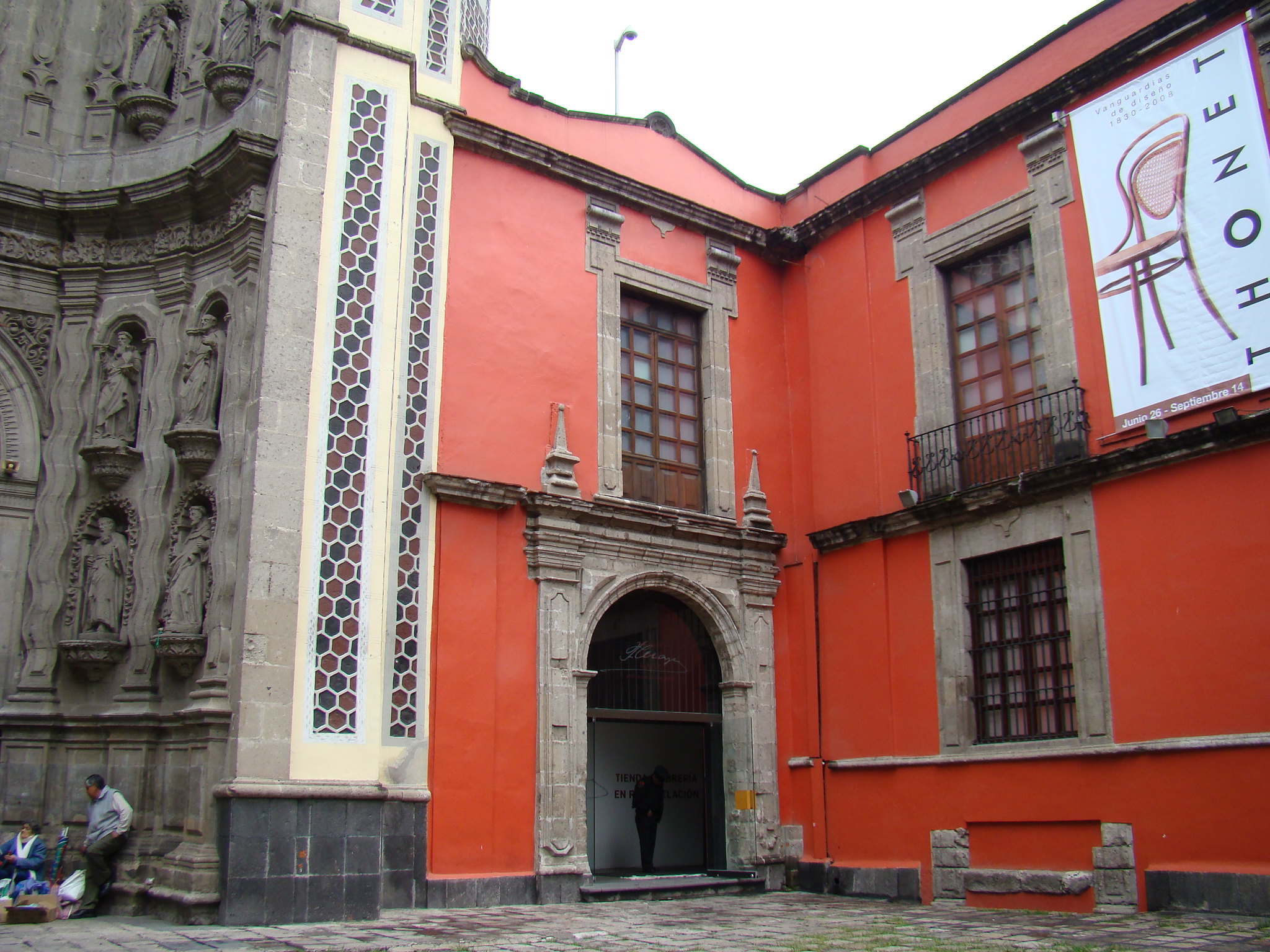
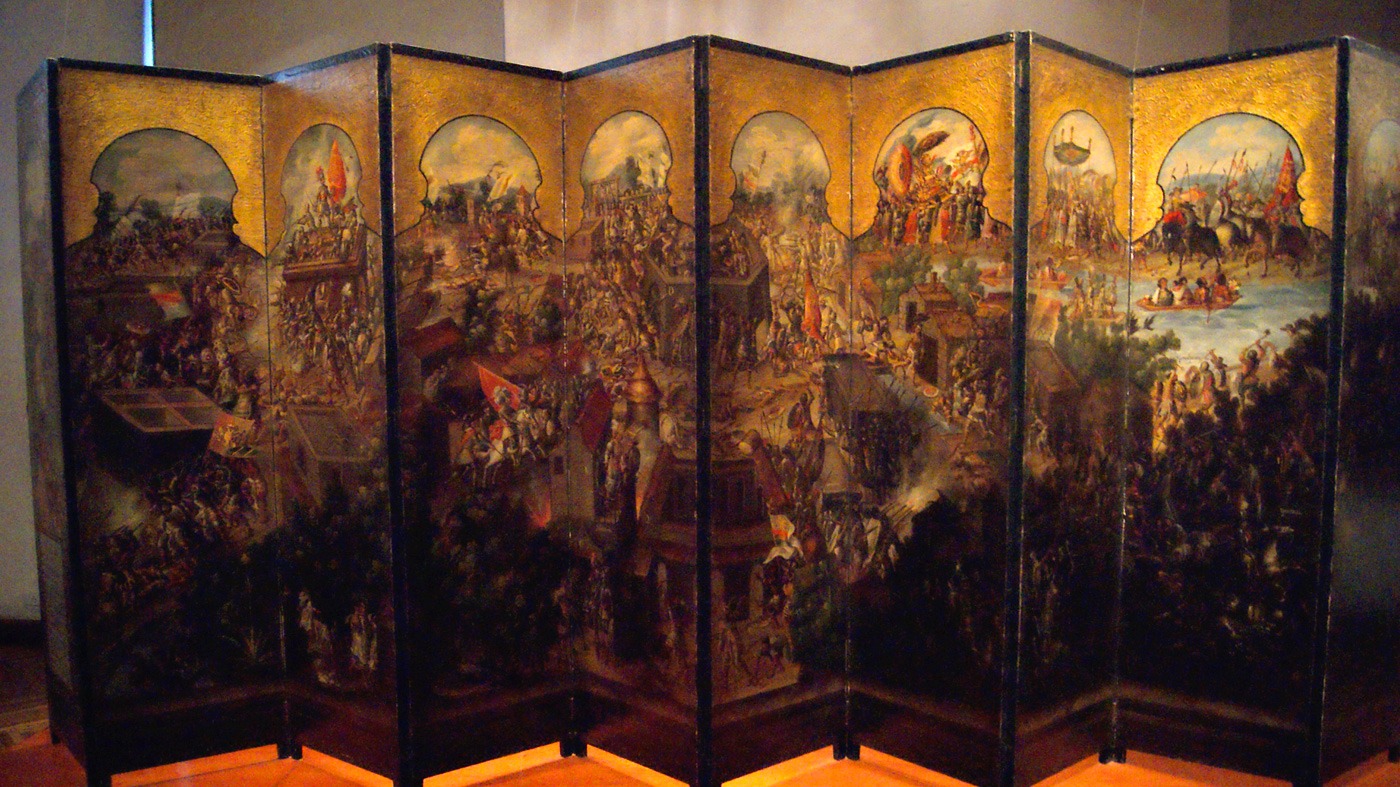
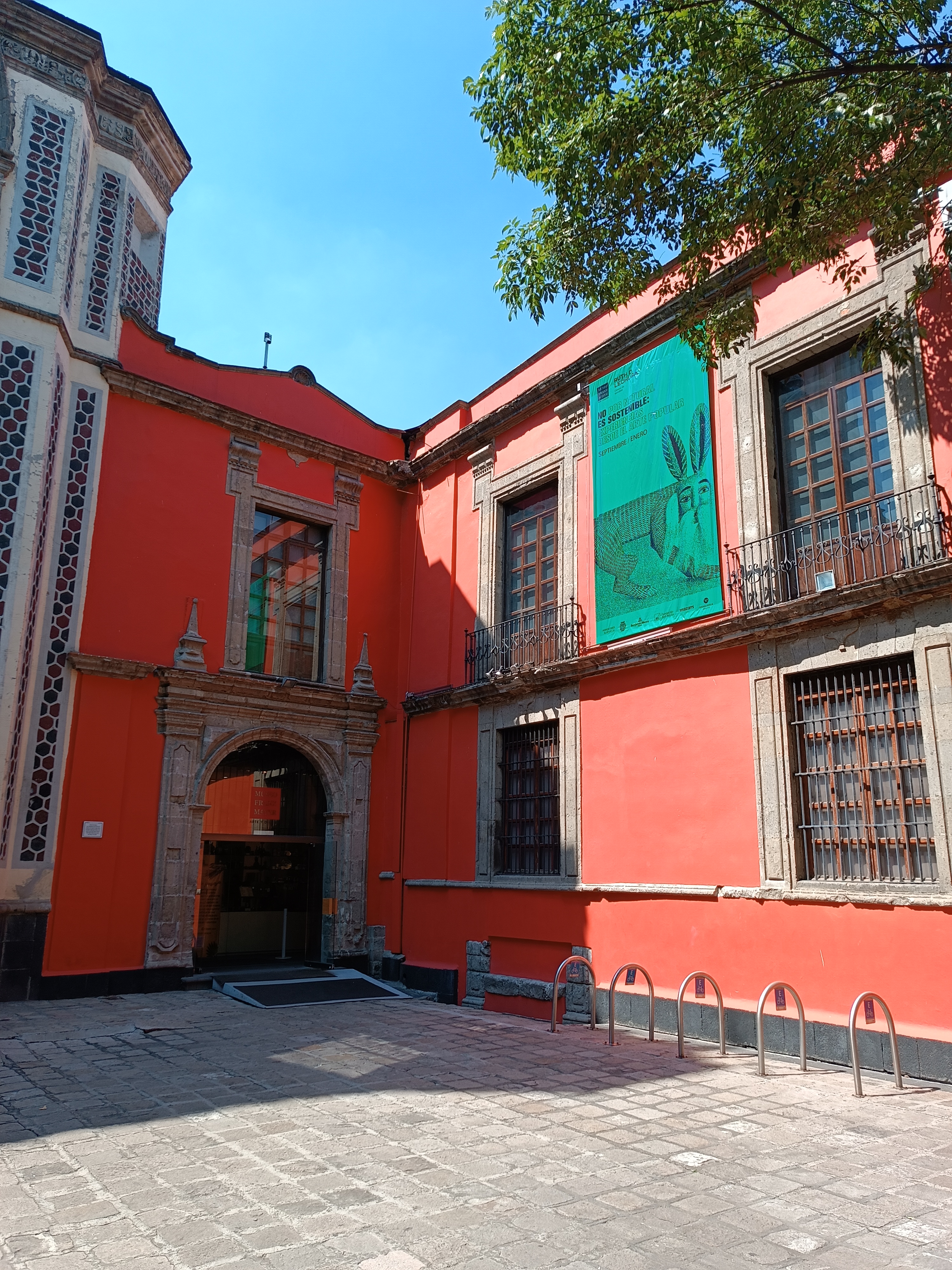
Photo: Romanus_too, Attribution-NonCommercial-NoDerivs 2.0 Generic
The Franz Mayer Museum holds at least some of the collection of the German-born photographer and philanthropist Franz Mayer. In fact, there’s only room for about 25% of the collection at this fascinating site. The Plaza de Santa Veracruz serves as an entrance plaza for the museum, and for the Church of Santa Veracruz, as well as the National Printmaking Museum.

Having arrived in Mexico in 1905, Mayer began seriously collecting in 1923. In 1963, he established a trust to look after what was by then an enormous collection. Today’s it’s primarily a decorative arts museum, but temporary exhibits often include books, graphic design, photography, industrial design. The museum only opened in 1986, 11 years after Mayer’s death. It’s been a continual tribute to the collector, and to the city ever since.
The permanent collection includes ceramics, silverware, textiles, furniture, sculpture and painting, feather art, lacquer ware, ivory, tortoiseshell, enamels and glass. Works range from the 16th through the 19th centuries.
The historic building was once a grain mill and warehouse. It was, in 1582, converted to a hospital and served in the capacity for 400 years. In fact, the founder was one Pedro López, the first medical doctor to graduate from the Royal and Pontifical University of Mexico, today’s UNAM.
The Hospital de los Desamparados came under the auspices of monks of the Order of San Juan de Dios in 1604. They were largely responsible for the character of the architectural structure you can see today. It’s primarily an 18th century complex. The cloister, most of today’s museum, is connected to the Church of San Juan de Dios. The order though, along with all religious orders were expelled from the building in 1820. The hospital administration then passed to the Mexico City government.
Maximilian of Habsburg decreed it a hospital especially for prostitutes. Though the hospital specialized in the treatment of venereal diseases, it remained an important women’s hospital under varying names for several years. In 1931 it was declared a historical monument.
In 1981, the Federal Government granted the Old Hospital of San Juan de Dios to the Franz Mayer Cultural Trust. After a year rehabilitating the property, a historical monument was saved and the Franz Mayer Museum opened its doors.
The museum library holds nearly 22,000 volumes. This includes works from the 15th to the 21st centuries, many of them rare and outstanding. The collection covers decorative arts, design, and Mexican history as well as an entire section of editions of Don Quijote. There are 800 different copies in some 18 languages all published before 1905. The library is named for the founding President of the Board of Trustees.
![]() Westbound Turibus Historic Center Circuit buses stop directly outside the museum on the Avenida Hidalgo. Eastbound buses will be directly across the Alameda Central on the other side of the Juárez Hemicycle. The walk from one side to the other takes about five minutes.
Westbound Turibus Historic Center Circuit buses stop directly outside the museum on the Avenida Hidalgo. Eastbound buses will be directly across the Alameda Central on the other side of the Juárez Hemicycle. The walk from one side to the other takes about five minutes.
Hours: Weekends, 10 a.m. to 6 p.m.. Tuesday through Friday, 10 a.m. to 5 p.m.
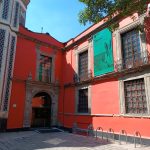 The German businessman and banker Franz Mayer lived in Mexico toward the end of his life. Here he gathered an impressive collection of works of art, artifacts, and utilitarian arts from Europe and America. Genres covered by the collection include: utilitarian arts, sumptuary arts, works of art, plumaria, etc. Upon Mr. Mayer's death, his widow and the Mexican State reached an agreement to exhibit the collection that was kept in a mansion on Paseo de la Reforma. The Franz Mayer Museum was created in 1981 when the building of the former Hospital de San Juan de Dios was handed over for restoration. Today several collections are exhibited in the space, and visitors can admire the hospital spaces maintained by the Order of St. John of God from 1604 to 1815.
The German businessman and banker Franz Mayer lived in Mexico toward the end of his life. Here he gathered an impressive collection of works of art, artifacts, and utilitarian arts from Europe and America. Genres covered by the collection include: utilitarian arts, sumptuary arts, works of art, plumaria, etc. Upon Mr. Mayer's death, his widow and the Mexican State reached an agreement to exhibit the collection that was kept in a mansion on Paseo de la Reforma. The Franz Mayer Museum was created in 1981 when the building of the former Hospital de San Juan de Dios was handed over for restoration. Today several collections are exhibited in the space, and visitors can admire the hospital spaces maintained by the Order of St. John of God from 1604 to 1815.
Heart of México Walking Route: Manuel Tolsá - Santa Veracruz
< < Plaza de Santa Veracruz | Printmaking Museum > >
Proyecto “Corredor de Cultura Digital”.
Nombre de la investigación: Investigación Centro Histórico, Monumentos, Edificios y Puntos de Interés (2023)
Dirección de investigación y diseño de Rutas: Acércate al Centro A.C. Guadalupe Gómez Collada
Coordinación e investigación histórica: Fideicomiso del Centro histórico Dir. Maestra Loredana Montes
 museo@franzmayer.org.mx
museo@franzmayer.org.mx
 +52 (55) 5518 2266
+52 (55) 5518 2266
 http://www.franzmayer.org.mx/
http://www.franzmayer.org.mx/

Nearest at 0.02 kms.

Nearest at 0.03 kms.
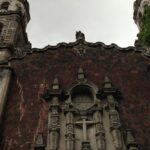
Nearest at 0.07 kms.

The National Art Museum in Mexico City's Centro Histórico is always going to be a holiday highlight.

One of Mexico City's most beautiful historic squares, it's a meeting place for booklovers and dealers.
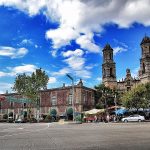
Presiding over Avenida Balderas like a fount of history, the Old Hipolito Church still strikes a somber chord.
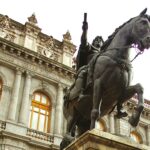
Perhaps more controversial than Sebastián's big yellow replacement, Charles the Fourth is still riding high.
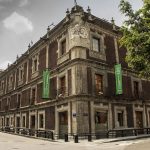
One of the most painstakingly restored 17th century complexes in the City, MIDE tackles a tough subject with style.